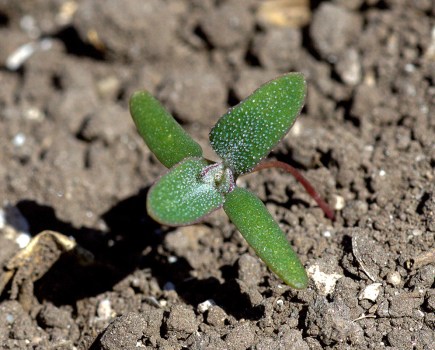Despite UK cereal cropping reported to be substantially down this season, growers are advised to not hold out for a price hike when it comes to marketing their grain. CPM finds out why.
“Just because the UK crop may be tight this year doesn’t mean prices will go up.”
By Janine Adamson
As with most things in life, there are two sides to every story. Where a layman might assume that because the UK’s cropping area is down this year due to unprecedented weather conditions, it would fall short of domestic demand and thus generate higher price, anticipated global availability means generally speaking, grain is likely to be available.
So although the world’s current grain requirements look to be adequately met, whether that be through import or export, it does mean from an on-farm selling perspective, considerable price increases are unlikely to take place.
That’s the message from Openfield member services director, Richard Jenner, who says growers may have to become accustomed to values of around £180-190/t ex-farm, rather than the £300t/ha seen in 2022. “We went through a period of high prices but seem to have settled into a more even range now with smaller fluctuations.
“Remember that just because the UK crop may be tight this year doesn’t mean prices will go up, the market doesn’t work that way sadly. Grain consumers will look to imports to cover the lack of home-grown cereals,” he says.
Cecilia Pryce, head of research, compliance and shipping at Openfield, agrees and says globally, the world has confidence there’s enough wheat, barley and maize. “If all goes to plan, the same exporters of these key commodities will dictate the market.
“The UK is likely to be a net importer of cereals next year, but the question will be, which crops? There could be a requirement for cheap feed maize or it could be high quality milling wheat,” she explains.
“It’s all down to how much demand there is for production, bearing in mind the UK has over the years generated domestic demand to consume our domestic crops, be that through ethanol plants, starch manufacture, animal feed or the daily loaf of bread. It all creates regional pulls throughout the UK for cereals.”
Furthermore, Cecilia highlights the volume of 2023’s crop being carried forward into 2024’s marketing. “There’ll have to be a price equalisation between new and old crop. The two will eventually meet but this may not happen until new crops are cut and in the barn and the quality is known.”
Richard says the large remaining stocks from last year could mean the market maintains its current ‘benign’ position. “It will certainly buffer the deficit in new crop. However, the biggest risk is to not sell anything at all, doing nothing isn’t really a valid option”, he stresses.
“The advice is to sell something if you haven’t done so yet, bearing in mind current prices are at the upper end of what we’ve been seeing overall.”
But will having to rely on imports leave the UK vulnerable to currently unforeseen geopolitical events? Cecilia says at the moment, there are no major global concerns just markers. “Unknowns can still happen and of course we could be subject to a weather market as we approach harvest which could add some volatility.
“Ultimately, Ukraine taught the markets a big lesson but now, ships are moving and most of their old crop is exported. There is currently a working logistics system in Ukraine so it’s reduced some of the unknowns.
“As for the Middle East, only time will tell – they aren’t perceived as major cereal players but we all require oil and safe passage for global shipping. Global grains is a logistics game, moving over supply to consumers in the most efficient way possible – any shocks and prices react,” she adds.
AHDB senior analyst (cereals & oilseeds), Helen Plant, agrees that there appear to be no current significant watch-outs, although adverse weather and global events remain a risk. “Russian crops look healthy and conditions are good for planting in Australia as they enter a new season. Although European conditions are concerning, globally that’s not the case,” she says.
According to Richard, global conflict often doesn’t affect the market as much as might be expected. “Otherwise, any problems are unlikely to arise until June onwards when harvest starts for crops in the Northern Hemisphere. The influence of South American maize crops is a little down the line too, which are a current watch-out due to the weather.”
Helen adds that although importing greater volumes does expose the UK to global volatility, it isn’t the first time this has happened and the market is set up for it. “However, the quality of the UK crop will dictate the balance between bread wheat and feed grain imports. And at the moment, crop condition isn’t great,” she points out.
“It all depends on whether UK crops can recover at this point, with wheat having the most potential to bounce back. A practical approach will be necessary – considering input spend and planning ahead to aid cash flow.”
Regardless of what’s occurring globally, both Richard and Cecilia agree that farmers have to devise some form of grain marketing strategy. “Whereas Openfield wouldn’t advocate large amounts of forward-selling, there are other tools such as trackers and pools which help to mitigate uncertainty,” says Richard.
“It’s all about an individual’s attitude to risk, not dissimilar to committing to a mortgage on a property. Do you want consistency to aid cashflow management, or are you happy to operate within greater risk and track?
“It’s also worth noting that having a plan relieves stress and pressure. If a farmer is marketing their own grain themselves, this requires constant attention. It can’t be left for a week because when it does move, the market moves quickly,” he stresses.
As with every year, key to decision making will be understanding the cost of production versus yield potential. But according to Cecila, it’s not just when the crop is in the ground. “1t/ha can make a lot of difference – yield is everything, similarly, a crop has to be looked after once it’s in the silo. Farmers supply feed and food markets so grain must meet contractual and legislative requirements.”
On the subject of quality, Helen notes milling wheat premiums remain high, if the specification can be met. “The market is offering incentives to grow milling wheat it’s just whether it stacks up from an input spend perspective and if weather allows. Nitrogen prices have fallen quite significantly, which will help, although they are still above pre-Ukraine war levels,” she says.
Cecilia reminds growers that everyone is in the same boat worldwide, broadly speaking. “It’s a difficult time with challenging weather, relatively high input prices and environmental net zero targets. But we’re all in this together – the world carries on and farmers globally all have challenges to overcome.
“The UK currently operates within a global market which either feeds us or takes our surplus. As long as transparent trade continues, we should be ok,” she concludes.
This article was taken from the latest issue of CPM. Read the article in full here.
For more articles like this, subscribe here.
Sign up for Crop Production Magazine’s FREE e-newsletter here.




